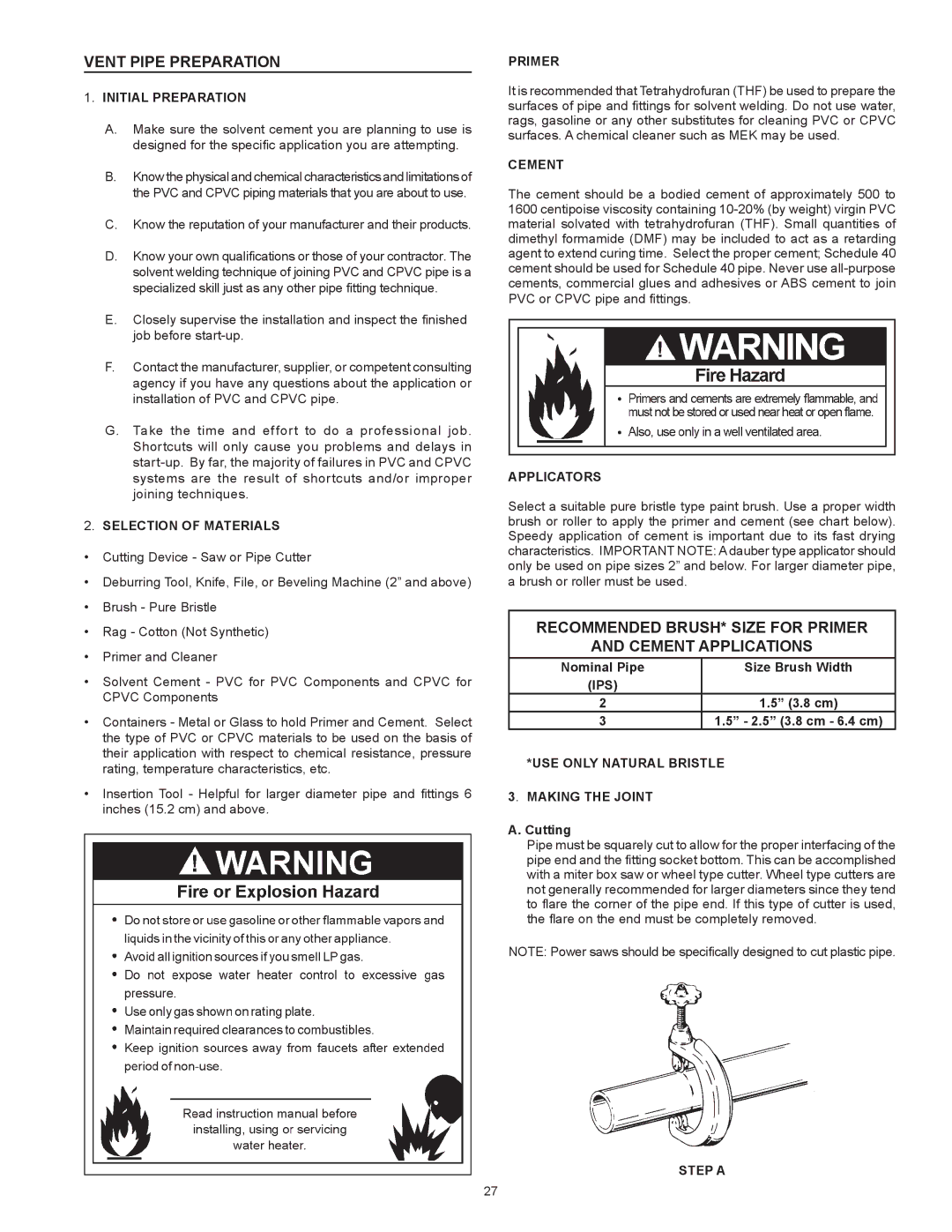BTX-80 SERIES 100 specifications
The A.O. Smith BTX-80 Series 100 is a cutting-edge heating solution designed for effective and efficient water heating. This model is particularly well-suited for residential applications, offering an impressive balance of performance and energy efficiency.One of the standout features of the BTX-80 Series 100 is its innovative design, which incorporates a high-efficiency condensing technology. This allows the unit to capture and utilize heat that would otherwise be lost in traditional systems, thereby maximizing energy usage and reducing overall operating costs. With an impressive energy factor (EF) rating, this water heater contributes to lower utility bills while promoting environmental sustainability.
The BTX-80 is equipped with a powerful 80-gallon tank, providing ample hot water for households of varying sizes. Its large capacity ensures that multiple appliances can operate simultaneously without running out of hot water, making it an ideal choice for families with high demand. The model also incorporates a robust heating element that ensures rapid recovery and maintains consistent water temperatures.
Safety and convenience are paramount in the design of the BTX-80. It features a comprehensive digital control system that allows users to set precision temperature settings according to their needs. The intuitive interface simplifies adjustments and monitoring, while safety mechanisms like temperature and pressure relief valves provide peace of mind during operation.
A.O. Smith has also prioritized quality and durability in the construction of the BTX-80 Series 100. The tank is made from high-quality materials and comes with a robust enamel coating that resists corrosion and extends its lifespan. Additionally, the unit is backed by a lengthy warranty, reflecting the manufacturer's confidence in its longevity.
Installation and maintenance are straightforward with the BTX-80, as it is designed to fit seamlessly into existing plumbing configurations. Furthermore, the unit operates quietly, ensuring minimal disruption in the home environment.
In conclusion, the A.O. Smith BTX-80 Series 100 stands out in the market as a reliable, energy-efficient, and user-friendly water heating solution. With its advanced technologies and emphasis on safety and durability, it proves to be a smart investment for any household looking to improve their hot water system.

